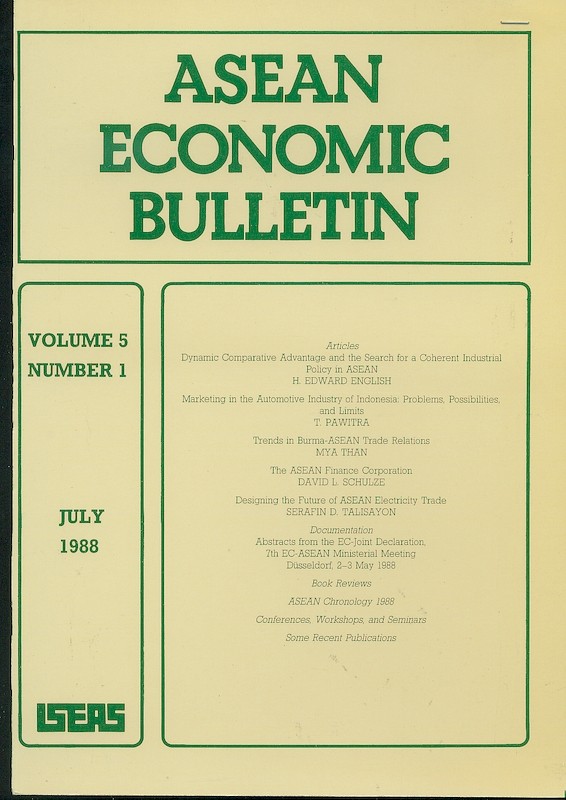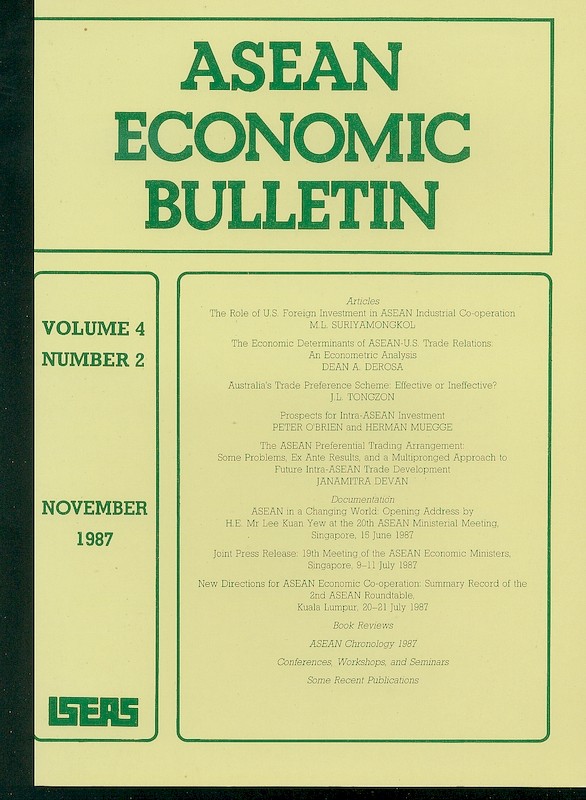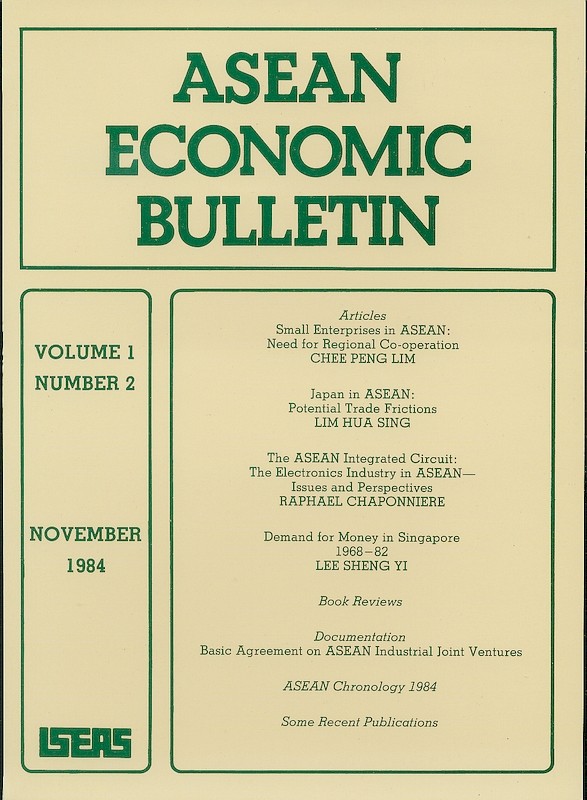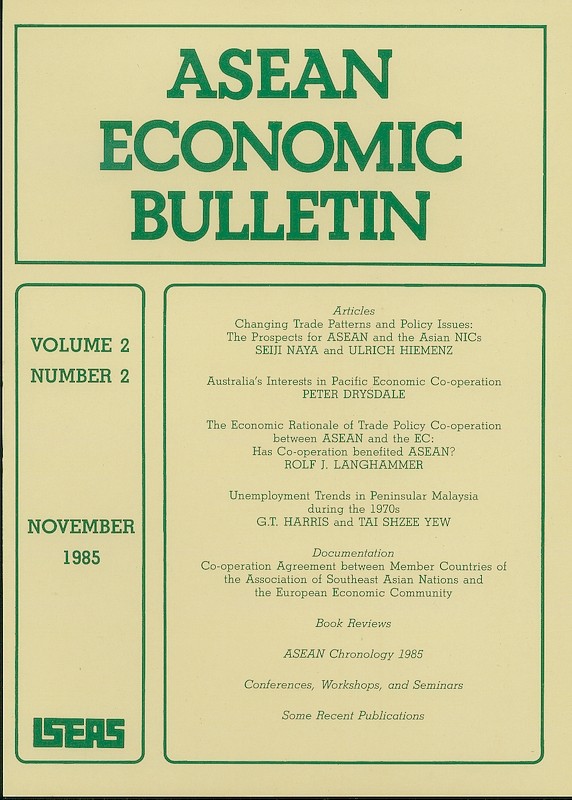Contemporary Southeast Asia: A Journal of International and Strategic Affairs Vol. 28/1 (Apr 2006)

Date of publication:
June 2006
Number of pages:
181
Code:
CS28/1
Contents
-
Contemporary Southeast Asia: A Journal of International and Strategic Affairs Vol. 28/1 (Apr 2006)
-
Preliminary pages
- ARTICLES
-
Non-proliferation and Counter-terrorism Cooperation in Southeast Asia: Meeting Global Obligations through Regional Security Architectures?, by Tanya Ogilvie-White, author see abstractThis article explores the relationship between global and regional governance in tackling terrorism in Southeast Asia, with particular reference to the security of nuclear, biological, chemical, and radiological (NBCR) materials. Part one describes the global multilateral non-proliferation instruments established since the terrorist attacks of 9/11 particularly United Nations Security Council Resolution 1540 analysing the extent to which ASEAN members have been fulfilling the binding legal obligations that they entail. Part two assesses the role of three of Southeast Asia's regional security frameworks (APEC, ARF, and ASTOP) in setting the regional non-proliferation and counter-terrorism agenda, charting their successes and failures in promoting compliance with global instruments, and in ensuring that pledges made by ministers in international and regional forums are followed through at the national level. It argues that ASEAN perceptions of West-centric security agendas, combined with frustrations that regional and global institutions are insensitive to local particularities, are undermining opportunities for achieving effective regional governance, even though concerted efforts are being made in the area of capacity-building. Bilateral security arrangements and single-issue multilateral discussions have been more successful than more ambitious regional frameworks at building trust and confidence and fostering genuine security cooperation.
-
Resolving Internal Conflicts in Southeast Asia: Domestic Challenges and Regional Perspectives, by Michael Vatikiotis, author see abstractThis article examines a number of armed conflicts in Southeast Asia and draws out common threads of causality and impact. First, it is argued that internal conflicts continue to afflict the region and act as an obstacle to political reform. Next, the slow process of conflict resolution is highlighted and several reasons stated for why this is the case. The example of Southern Thailand is highlighted to show how poorly some of these conflicts are being managed. Finally, several suggestions are made to help policy-makers in the region improve the process of conflict resolution.
-
Ethnic or Religious Cleavage? Investigating the Nature of the Conflict in Southern Thailand, by SP Harish , author see abstractThe provinces of Yala, Pattani, and Narathiwat in Southern Thailand have witnessed a sharp spike in violence in the past few years. The unrest is threatening to tarnish Prime Minister Thaksin's period in office. The contemporary literature as well as the media tend to portray the strife as one between Buddhists and Muslims. This is markedly different from earlier studies which place less importance on religion and treat the discord as one between Thais and Malays. In this regard, this article aims to explain the transformation from a primarily ethnic strife to a predominantly religious conflict. It argues that despite the rise of the religious factor in the discord, it is flawed to treat the violence in Southern Thailand as entirely between Buddhists and Muslims. It further contends that the ethnic Thai-Malay divide is still deeply entrenched in the insurgency.
-
New Chinese Leadership in Malaysia: The Contest for the MCA and Gerakan Presidency, by James Chin, author see abstractIn 2005, party elections were held for the Malaysian Chinese Association (MCA) and Gerakan Raykat Malaysia (Gerakan, or Malaysian Peoples Movement), the two main Chinese-based political parties in the ruling Barisan Nasional (BN). These elections were unusual as the challengers for the presidency were strong candidates and the incumbents had to really fight to retain their presidency. This article argues that although party contests will not bring any real change to the political position and direction of the parties concerned, it does mean that party leaders can no longer take for granted that their positions will not be challenged. The trend among Malaysian political parties has been for the top position in a political party to be an uncontested post. This has meant that party leaders stay for long periods at the top, often more than a decade. The strong contests in the MCA and Gerakan also means that the tenure for leaders of Chinese-based political parties in Malaysia may be limited.
-
Indonesia Seven Years after Soeharto: Party System Institutionalization in a New Democracy, by Paige Johnson Tan, author see abstractThis article examines what the performance of Indonesia's political parties seven years on from Soeharto's resignation can tell us about politics in the country. Using the party system institutionalization framework first developed by Scott Mainwaring and Timothy Scully in Building Democratic Institutions: Party Systems in Latin America (1995), the article finds that Indonesia's parties and party system show a mixed score card, strengths and weaknesses mixing to deprive the parties of legitimacy. On balance, the 2004 elections and 2005 regional elections represent a step towards further deinstitutionalization due to the primacy of personalities in the direct elections of the president and the regional heads. Democracy may indeed now be the only game in town, but its operation is likely to be rocky. There is a silver lining, however, accountability has been somewhat improved due to the electorates realization of its power to reward and punish parties and political leaders.
-
Collective Action Problems and Regional Integrationin ASEAN, by Hidetaka Yoshimatsu, author see abstractThis article examines how states attempt to overcome collective action problems for promoting regional integration, by highlighting such attempts by members of the Association of Southeast Asian Nations (ASEAN). It considers two kinds of collective action problems: collaboration games where actors are lured to defect from an agreement in order to obtain short-term gains, and coordination games where actors face difficulty in reaching an agreement. The article argues that although ASEAN countries have not intended to establish a supranational body to resolve collective action problems, they have gradually developed feasible enforcement mechanisms by intensifying the centralized nature of regional organization. It also contends that some member states have begun to play a focal point role in resolving coordination problems resulting from accelerated regional integration and market liberalization, and the resolution of coordination problems has been pursued in a framework where extra-regional countries and environments play a significant role.
-
Japans Human Security Role in Southeast Asia, by Lam Peng Er, author see abstractJapan is playing an active human security role in post-Cold War Southeast Asia, especially in crises where thousands of lives are at stake, displaced, or even lost. This approach includes: providing massive financial assistance to the region during the 199798 Asian financial crisis, engaging in peacemaking in Cambodia and Aceh, peace-building in East Timor, Aceh, and Mindanao, offering financial and medical assistance when East Asia was hit by the SARS epidemic, and deploying the largest contingent of Japanese troops since the end of World War II for humanitarian assistance to tsunami-stricken Aceh in early 2005. A broad human security framework which encompasses peacemaking, post-conflict peace-building, and the dispatch of troops for humanitarian relief in Southeast Asia allows Japan to not only play a more active political role but also to avoid being branded as an aspiring military power by its domestic and international critics.
- BOOK REVIEWS
-
BOOK REVIEWS: Conflict and Terrorism in Southern Thailand. By Rohan Gunaratna, Arabinda Acharya, and Sabrina Chua, by Thitinan Pongsudhirak, author
-
BOOK REVIEWS: Realism and Interdependence in Singapores Foreign Policy. By N. Ganesan Mller, by Joergen Oerstroem Moeller, author
-
BOOK REVIEWS: The Indonesian Presidency: The Shift from Personal toward Constitutional Rule. By Angus McIntyre, by Kazuo Takahashi, author
-
BOOK REVIEWS: Spirited Politics: Religion and Public Life in ContemporarySoutheast Asia. Edited by Andrew C. Wilford and Kenneth M. George, by Jacob Ramsay, author
-
BOOK REVIEWS: UN Peace Operations and Asian Security. Edited by Mely Caballero-Anthony and Amitav Acharya, by Vesselin Popovski, author
-
BOOK REVIEWS: Strategic Asia 200506: Military Modernization in an Era of Uncertainty. Edited by Ashley J. Tellis and Michael Wills, by Carlyle A. Thayer, author






